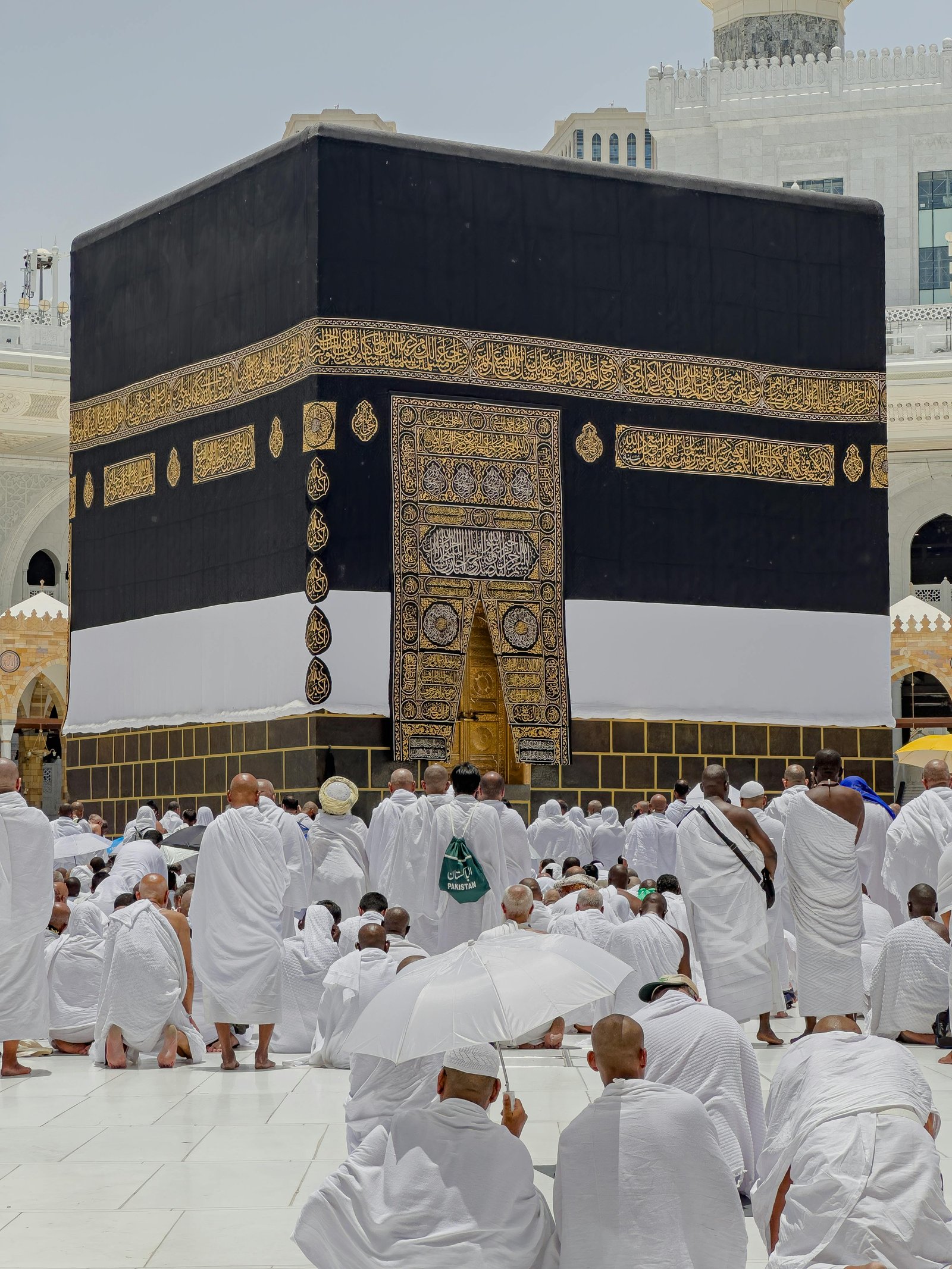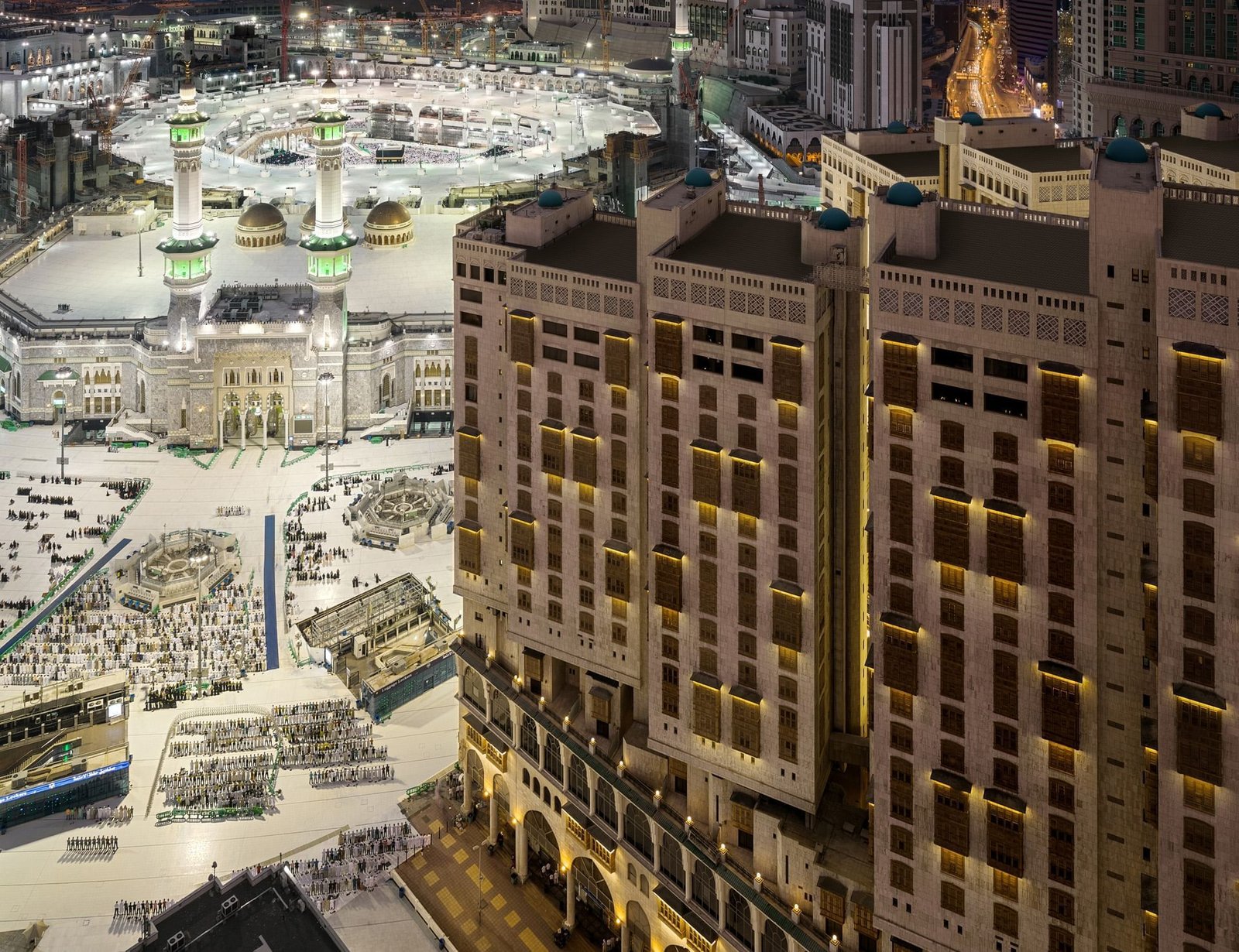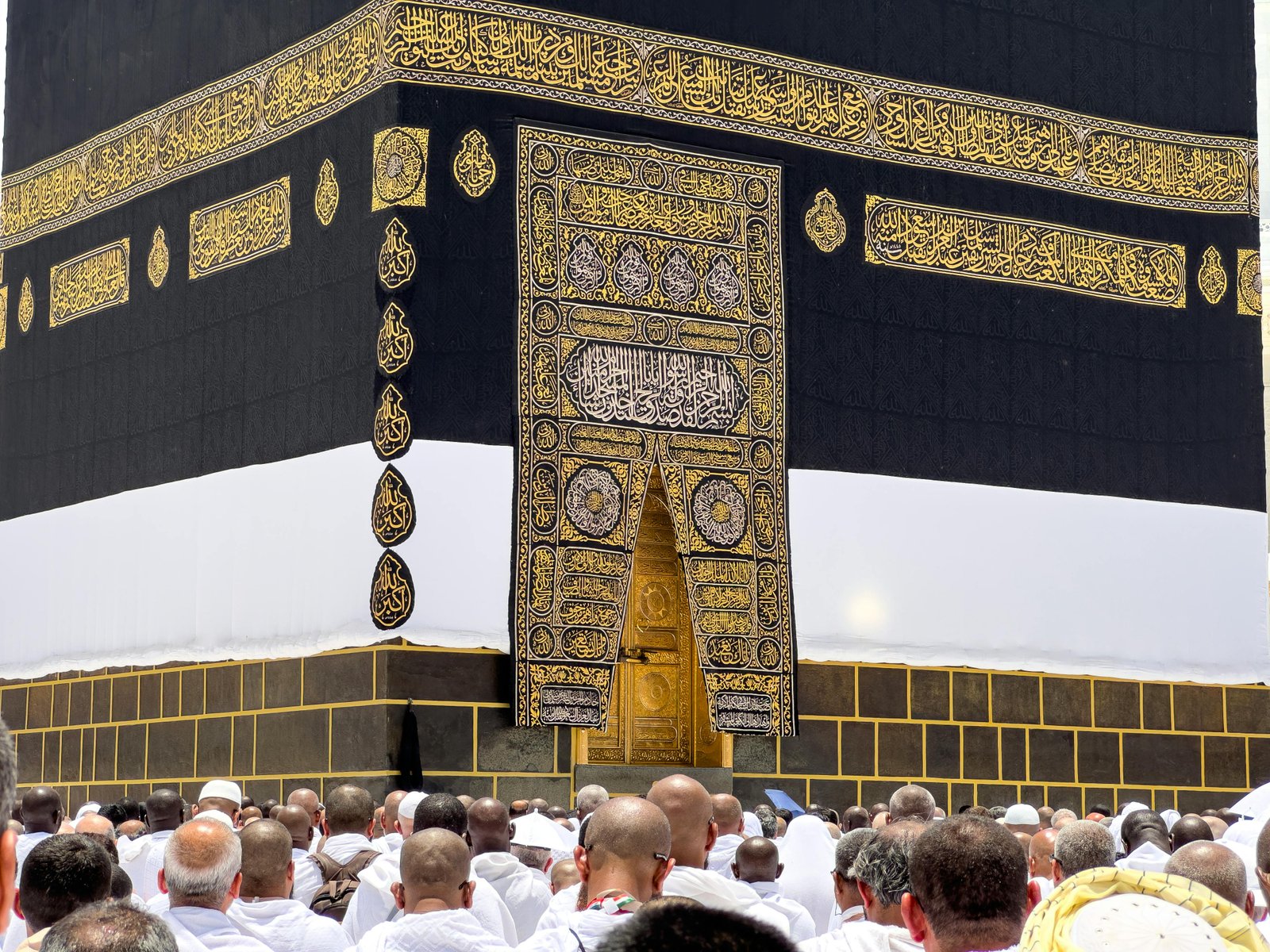Reaching beyond the Kaaba during Hajj
In the center of Masjid al-Haram, you see the Kaaba. A simple cube-like structure made of dark rough stones with white chalk filling the fissures. At the first sight, a shiver runs through you and you wonder in amazement … This plain and empty structure is the center of our faith, prayers, love, life, and death?
Your question in admiration; Where have I come? What is this place?
What you see is the antithesis of your visual imaginations of the Kaaba. Some might perceive a sacred place to be an architectural splendor whose ceilings are covered in silent beauty or it could be a sacred tomb housing the grave of an important person – a hero, a leader or prophet! But No! – Instead, it is an empty room. It reflects no architectural skill, beauty, art, inscription or quality; and no graves are found here. There is nothing specific that captures your attention or feelings except a yearning pulling you towards the Kaaba.
You will realize that there is nothing here to disturb your thoughts and feelings about God. The Kaaba, which you want to embrace, is a gateway for your feelings to ascend to the heavens and connect with your creator. This is something you were unable to achieve in your world filled with distractions and fragmentation. Before you could only theorize, but now you can see the “absolute”, the one who has no direction – Allah! He is everywhere.
How fortunate it is to that the Kaaba is empty! It reminds you that you are at the Kaaba to start a pilgrimage. It is not your destination. Moreover, it is a guide to show you the destination.
Having decided to move toward eternity, you begin the Hajj by moving around the Kaaba. It is an eternal movement towards Allah not towards the Kaaba. The Kaaba is the beginning and not the end. It is the place where Allah, Ibrahim, Mohammed, and other great people will meet you. You will be present there only if your mind is not preoccupied with self-centred thoughts. You must be one of the people! Everyone is dressed in the same special garments and is being honoured as guests of Allah. He has more enthusiasm toward humanity than any one else. However, the Kaaba the house of Allah is called the “house of people”.
“Behold! The first sanctuary appointed for humankind was that at Bekka (Mecca), a blessed place, a guidance to all people.” (Quran 3:96)
If you enter this house while still being attached to your material self you will miss the sacredness of this house.
Mecca is called “Baite-Atiq”. Atiq represents being free! Mecca belongs to nobody. It is free from the reign of rulers and oppressors; therefore, no one controls it. Allah is the owner of Mecca while the people are its residents.
Under the provisions of travels, a Muslim is allowed to shorten his prayers if traveling at least forty miles away from his home. But at Mecca, regardless of where you are from or how far you have traveled, you devote yourself to the complete prayer. It is your land, your community and you are safe. You are not a visitor, but you are at home.
Before coming to Mecca, you were a stranger, exiled in your own land. But now, you have joined the family of humanity. Humankind, the dearest family of the world, is invited to this house. If you as an individual are “self-centred”, you will feel like a homeless stranger lost with no shelter and no relatives. Therefore, shed the self-distinctive tendencies. You are now prepared to enter the house and join this family. You will be welcomed as an honoured guest of Allah.
As you enter this house visualize Prophet Ibrahim who was considered a radical for his times. Rejecting all the idols of his forefathers, he oriented his loved and obedience to the One True God. With his own hands and along with his son, Ismail, he built the Kaaba. A structure that symbolizes the singular nature of Allah in the world.
The building is uncomplicated. Black rocks of “Ajoon” are laid on top of each other. There is no design or decoration involved. Its name, Kaabah, means a “cube” – but why a “cube”?
Why is it so simple and lacking in colour and ornamentation? It is because Almighty Allah has no “shape”, no colour and none is similar to Him. No pattern or visualization of Allah that man imagines can represent Him. Being omnipotent and omnipresent, Allah is “absolute”.
Although Kaaba has no direction (because of its cubic shape), by facing the Kaaba when performing prayers, you choose Allah’s direction and face Him. Kaaba’s absence of direction may seem difficult to comprehend. However, universality and absoluteness prevails. The six sides of the cube encompasses all directions and simultaneously their sum symbolizes no direction!
“Unto Allah belongs the east and west, and wherever you turn you will be facing Allah.” (Quran 2:115)
When praying outside of Kaaba you must face it. Any structure except the Kaaba directs north, south, east, west, up or down. Kaaba is an exception; it is facing all directions while it is facing none. Truly a symbol of Allah, it has many directions yet it has no particular direction.
Toward the west of Kaaba, there is a semi-circular short wall which is arching towards the Kaaba. It is called Ismail’s Hagar. Hagar signifies lap or skirt. The semi lunar wall resembles a skirt.
Sarah, the wife of Ibrahim had an Ethiopian maid called Hagar. She was a poor and humble servant of Sarah, who was given to Ibrahim in order to bear him a child. Here was a woman who was not equal to Sarah’s noble stature yet Allah connected the symbol of Hagar’s skirt to His symbol, Kaaba.
The skirt of Hagar was the area in which Ismail was raised. The house of Hagar is there. Her grave is near the third column of the Kaaba.
What a surprise since no one, not even prophets, are supposed to be buried in mosques but in this case, the house of a maid is located next to Allah’s house! Hagar, the mother of Ismail is buried there. The Kaaba extends toward her grave.
There is a narrow passage between the wall (Hagar’s skirt) and the Kaaba. When circumambulating around Kaaba, Allah commanded that you must go around the wall and not through the passage.
Those who have submitted themselves to the oneness of Allah and those who have accepted His invitation for Hajj touch this skirt when circumambulating the Kaaba. The grave of a maid and a righteous mother is now a part of the Kaaba; it will be circumambulated by man forever!
Allah, the Almighty, in His great and glorious Divinity is all self-sufficient. He needs no one and nothing.
Nevertheless, among all His countless and eternal creatures, He has chosen one, humankind, as the noblest of all of them. From among all humanity He has chosen: a woman, from among all women: a slave, and from among all slaves: a black maid! The weakest and most humiliated one of His creatures was given a place of dignity next to His own house.
The Unknown Soldier has been so chosen in the community of Islam!
The rituals of Hajj are a memory of Hagar. The word Higrah (migration) has its root in her name as does the word Mahajir (immigrant). “The ideal immigrant is the one who behaves like Hagar.” (Saying of Mohammad )
Higrah is what Hagar did. It is also a transition from wildness to civility and from denying the truth to accepting the Ultimate Truth.
In Hagar’s mother- tong her name means “the city”. Even the name of this Ethiopian slave is symbolic of civilization. Furthermore, any migration like hers is a move toward civilization!
Hagar’s grave is in the midst of man’s circumambulation of Kaaba. You, the mohajir (immigrant), who has detached himself from everything and accepted Allah’s invitation to go to Hajj, you will devote your circumambulation of the Kaaba to Allah and at the same time, you will be paying homage to the grave of a African maid.
It is difficult to realize. But for those who think they live in freedom and defend humanism, the significance of these incidents transgresses the scope of their understanding!
Article source: kashmirmonitor.in




